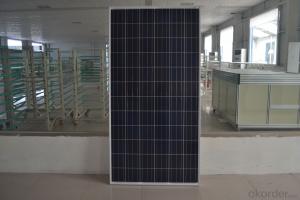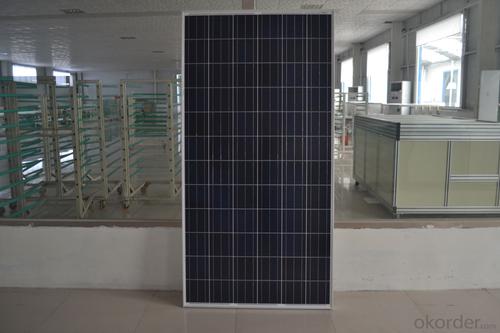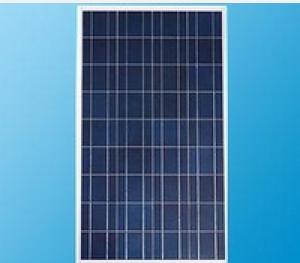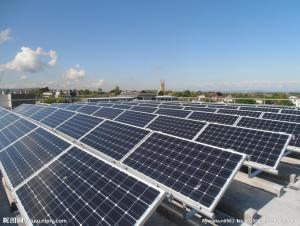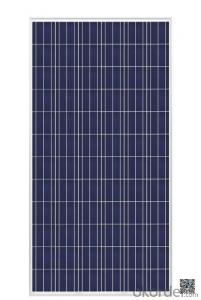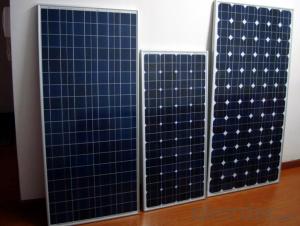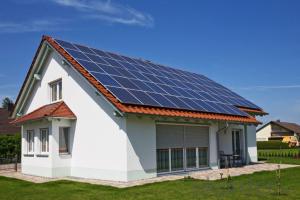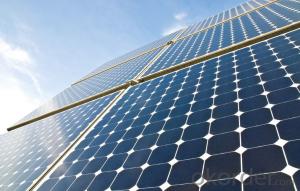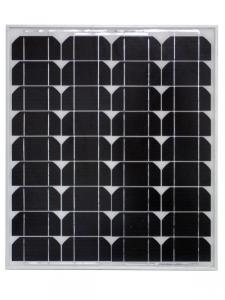Ure Solar Panels Poly 250W Solar Module
OKorder Service Pledge
Quality Product, Order Online Tracking, Timely Delivery
OKorder Financial Service
Credit Rating, Credit Services, Credit Purchasing
You Might Also Like
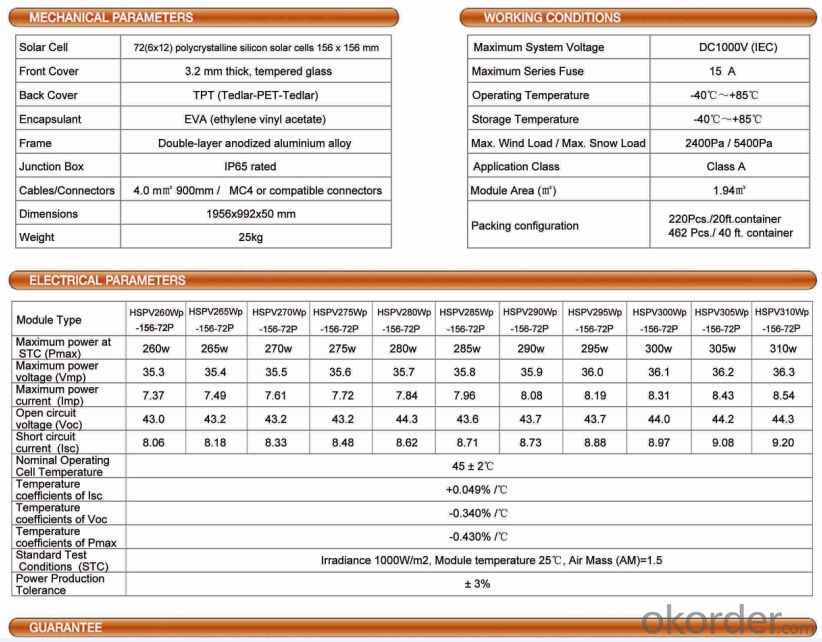
- Q: Can solar panels be recycled? What about the manufacturing of these panels is it done in an Eco-friendly way?
- No matter how electricity is generated you must use materials to build the plant. I don't know what my panels are made out of, and I don't know if they can be recycled. I also don't know what my other electric plant was made of or if it can be recycled. I do know now that it has been made and installed I'm not using coal or oil to make electricity, I'm not creating any emissions, and I won't have to worry about how high the cost of electricity goes.
- Q: Can solar panels be used in areas with high levels of wildlife activity?
- Yes, solar panels can be used in areas with high levels of wildlife activity. However, it is important to take certain precautions to minimize potential impacts on wildlife. This can include implementing proper installation techniques, such as avoiding nesting sites or wildlife corridors, and using deterrents to prevent wildlife from damaging the panels. Additionally, incorporating habitat-friendly designs and partnering with local conservation organizations can help mitigate any potential negative effects on wildlife populations.
- Q: If a solar panel (using 36 3x6 solar cells) puts out 60 watts, how many panels would I need (for a house) if I use a max of 2300 kWh in a month? I checked my electric usage for the past 2 years and the kWh is usually lower but I wanted to use the most kWh used (2300) for my question. Thanks!
- Good question. Something to keep in mind is that modern solar electric works _alongside_ the grid, so you don't need to displace your entire 2300 kWh. The best financial return, if any, might come at a point where you generate only 500, 000, or 500 kWh per month. How many panels you need strongly depends on your location. Speaking for the location of my house in San Jose, Ca, that amount of usage would be about a 2 kW array, and if you divide 60 into that, you get 200 panels. In a perfect location, you would need slightly less, in a northern state, you might need double that. If this was a real project, you would probably not use 60-watt panels. The choice of panels is not simply a matter of getting enough watts. 2 kW is a large system today for residential. The usual advice is to go for energy efficiency first, then consider solar after the usage is down.
- Q: Can solar panels be integrated into buildings?
- Yes, solar panels can be integrated into buildings through various methods such as rooftop installations, solar facades, and building-integrated photovoltaics (BIPV). These approaches allow for a seamless integration of solar panels into the building's structure, providing renewable energy generation without compromising the overall aesthetics or functionality of the building.
- Q: Are there any aesthetic considerations when installing solar panels?
- Yes, there are aesthetic considerations when installing solar panels. The appearance of solar panels on a property can be a concern for some individuals, especially if they prefer a specific architectural style or want to maintain a certain visual appeal. However, advancements in solar panel design have made them more visually appealing and adaptable to different settings. Additionally, options like integrated solar panels, which blend seamlessly with roofing materials, can help minimize any visual impact. Ultimately, choosing the right solar panel design and placement can ensure a balance between functionality and aesthetic appeal.
- Q: looking for alternative ways to save energy money and thinking about solar panels. anyone know anything about it and how expensive it is to install them?
- One okorder to save people a tremendous amount of money on solar installs.
- Q: I am doing a science fair project on solar panels, and I need four solar panels to conduct the experiment. I would only need the solar panels for a week. What type of solar panel should I get?
- If okorder / for some ideas.
- Q: I am thinking of buying a 3w solar panel called the nomad 3 from goal zero. I want to charge 35Wh lithum batteries. I have heard that lithium batteries are temperatmental and without a regulated current things could get ugly.I have a couple of chargers that came with the batteries. One is a 2v car charger and another is 0-240v wall charger.Goal zero sell something called a sherpa 50, which contains rechargeable batteries and an inverster and I think they suggest that I charge my batteries indirectly through the Sherpa 50, however, the sherpa 50 is expensive at $200, and seems to have a small capacity, in addition to being extra weight that i don`t want to carry.Electronics geniuses, you are my only hope.
- Lithium batteries do have special charging requirements. I would recommend that you use the 2 volt charger that came with them to keep them happy. Automotive power systems can have voltages as high as 4.5 volts when the engine is running so there's no need to limit the output of the panel to anything less than that. Check with the charger manufacturer to see what it will withstand. Some will work with systems up to 24 volts nominal (up to 29 volts actual) found in larger commercial vehicles such as trucks and busses. If your charger will work with both 2 and 24 volt systems you might not need anything extra to use the unregulated output of the panel. Otherwise I'd recommend a shunt regulator to clamp the output of the panel to no more than 4.5 volts. That way it would dissipate (waste) very little of the panel's power, and even that would only be during those rare times when the panel is producing maximum output. Such a device could be as simple as a high power zener diode, a low power zener coupled with a power transistor, or a precision shunt regulator such as a TL43 coupled with a power transistor. A more complex way would be a to use buck/boost regulator between the panel and your charger. You might gain a slight advantage under low light conditions when the panel isn't putting out much but the overall efficiency could end up worse than the simpler shunt regulator. Under optimum conditions, I would expect it to take a full day for a 3 watt (peak) panel to charge just one of your 35 Wh batteries. Charging an intermediate device such as the Sherpa 50 through its built in charger and then using it to charge your battery through yet another charger would severely cut your overall efficiency. Depending on how long you'll be gone, it might be far more practical, reliable, and economical to just carry (or find a way to be resupplied with) a few additional fully charged 35 Wh batteries. Don
- Q: Can solar panels be installed on carports or other structures?
- Yes, solar panels can be installed on carports or other structures. In fact, installing solar panels on carports or other structures is a popular option as it maximizes the use of available space while providing shade and shelter for vehicles or other purposes. This not only generates clean energy but also offers additional benefits such as reducing energy costs and providing protection from weather elements.
- Q: Can solar panels be used in areas with high levels of air humidity or moisture?
- Yes, solar panels can be used in areas with high levels of air humidity or moisture. While excessive moisture may slightly reduce the efficiency of solar panels, modern panels are designed to withstand a variety of weather conditions, including high humidity. Furthermore, regular maintenance and cleaning can help mitigate any potential impacts on performance.
Send your message to us
Ure Solar Panels Poly 250W Solar Module
OKorder Service Pledge
Quality Product, Order Online Tracking, Timely Delivery
OKorder Financial Service
Credit Rating, Credit Services, Credit Purchasing
Similar products
Hot products
Hot Searches
Related keywords
